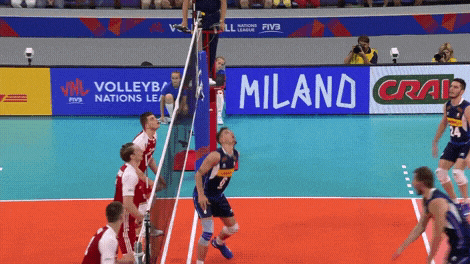Volleyball Setter Position – All You Need to Know

In the dynamic game of volleyball, the setter plays a crucial role in orchestrating the team’s offense and setting up scoring opportunities. This article will delve into the responsibilities, skills, strategies, and training necessary to excel as a volleyball setter. Whether you’re an aspiring setter or simply curious about the intricacies of this position, this guide will provide you with valuable insights.
What is the Volleyball Setter Position?
The volleyball setter is a key player who specializes in setting the ball for their teammates to execute attacks. They occupy a pivotal role in the team’s offensive system, acting as the playmaker and distributing precise passes to hitters. The setter is responsible for receiving the first ball from the initial contact and then setting it accurately for the attackers.
Responsibilities of a Volleyball Setter
As a volleyball setter, several important responsibilities fall under your purview. Firstly, you must possess exceptional hand eye coordination and ball handling skills to accurately position the ball for your teammates. Secondly, you are responsible for reading the opposing team’s defense and making split second decisions on which attacker to set. Additionally, setters need to be proficient in defensive skills, such as digging and blocking, to contribute effectively to all aspects of the game.
Qualities and Skills of a Volleyball Setter
To excel in the setter position, certain qualities and skills are paramount. A setter should possess excellent communication and leadership abilities, as they are the main link between the team’s offense and defense. Additionally, setters must exhibit strong situational awareness, quick thinking, and adaptability to make split second decisions during fast paced rallies. Precise hand placement, soft touch, and accurate setting are also fundamental skills that set top setters apart.
Setter’s Role in Offensive Plays
In offensive plays, the setter acts as the quarterback of the team, orchestrating the plays and setting up scoring opportunities. The setter’s primary objective is to provide the attackers with optimal hitting conditions by delivering well timed and accurate sets. They must assess the position of the blockers, the defensive gaps, and the attackers’ readiness to make the best setting decisions. Additionally, setters must be proficient in running various offensive systems, such as the 5-1, 6-2 or 4-2 formations, based on the team’s strategy.
Setter’s Role in Defensive Plays
While primarily known for their offensive contributions, setters also play a significant role in defensive plays. They must be skilled at reading the opposing team’s attacks and anticipating potential areas of vulnerability. Setters often contribute to the team’s defense by blocking at the net, making digs, or setting the ball to keep it in play. This versatility allows setters to impact the game both offensively and defensively, making them invaluable assets to their teams.
Strategies for Effective Setting
Effective setting requires a combination of technical proficiency and strategic acumen. Setters must establish rapport and develop an understanding with their hitters, anticipating their preferences and adjusting to their strengths. Here are some strategies to enhance your setting skills.
Establish Clear Communication
Effective communication is crucial between setters and hitters. Use hand signals, verbal cues, or even eye contact to indicate your intended sets. Clear and concise communication ensures that your hitters are ready to execute their attacks.
Master the Tempo
Understanding the tempo of the game is essential for setters. Adjust your sets based on the speed of the play, the position of the blockers, and the timing of your hitters’ approaches. Varying the tempo keeps the opposing defense guessing and creates opportunities for your team to score.
Maintain Consistency
Consistency in setting is key to building trust with your teammates. Aim for a consistent release point, hand position, and follow through on your sets. This reliability allows your hitters to anticipate and adjust their attacks accordingly.
Study Opponents’ Defense
Analyze the opposing team’s defensive patterns and tendencies. Look for weaknesses or gaps in their block and defense systems. By identifying these areas, you can exploit them with well placed sets to create scoring opportunities for your team.
Develop Deceptive Setting Techniques
Enhance your setting repertoire by incorporating deceptive techniques. Quick sets, back sets, and dump sets can catch the opposing team off guard and disrupt their defensive rhythm. Practice these techniques to surprise your opponents and keep them guessing.
Work on Timing and Footwork
Timing and footwork are critical for setters to position themselves optimally for setting. Practice your footwork patterns to ensure you’re always in the right position to set accurately. Develop a sense of timing to deliver the ball at the perfect moment for your hitters to attack.

Communication and Leadership as a Setter
As a setter, effective communication and leadership skills are essential for success. You act as the on-court conductor, directing the flow of the game and motivating your teammates. Here’s how you can enhance your communication and leadership abilities.
Be Vocal and Encouraging
Communicate with your teammates on the court, providing encouragement, instructions, and feedback. Use positive reinforcement to boost their confidence and keep the team’s energy high.
Lead by Example
Setters often set the tone for the team’s work ethic and determination. Demonstrate a strong work ethic, hustle, and a never give up attitude to inspire your teammates to give their best effort.
Develop Trust and Rapport
Build strong relationships with your teammates by earning their trust and respect. Show them that you are reliable and dedicated to their success. Foster a supportive and cohesive team environment.
Listen and Adapt
Effective leadership involves being receptive to feedback and open to new ideas. Listen to your teammates’ input, consider their suggestions, and adapt your game plan accordingly. Collaboration and inclusivity strengthen team dynamics.
Stay Calm under Pressure
As the setter, you face high pressure situations. Maintain composure and make sound decisions even in challenging moments. Your calmness and confidence will reassure your teammates and help them perform at their best.
Training and Development for Setters
Becoming a skilled volleyball setter requires consistent training and development. Here are some key areas to focus on.
Ball Handling and Technique
Master the fundamental ball handling skills, including hand positioning, setting arcs, and release points. Practice setting drills to improve your technique and develop soft hands for accurate and consistent sets.
Game Awareness and Decision Making
Enhance your game awareness by studying the game, watching professional setters, and analyzing game footage. Train your decision making abilities by simulating game scenarios and making split second choices on which attackers to set.
Physical Conditioning
Setters need agility, quickness, and endurance. Incorporate fitness exercises into your training routine to improve your speed, agility, and stamina. Focus on exercises that target your lower body strength, core stability, and overall conditioning.
Practice Communication Skills
Communication is vital for setters. Practice effective communication with your teammates during training sessions and matches. Work on your verbal cues, hand signals, and non verbal communication to ensure seamless coordination on the court.
Play in Different Positions
Playing in different positions can enhance your overall understanding of the game. It allows you to experience the game from different perspectives and develop a deeper knowledge of the roles and responsibilities of other positions. This knowledge will help you anticipate the needs of your teammates and make better setting decisions.
Seek Coaching and Feedback
Engage with experienced coaches and seek their guidance. They can provide valuable insights into your technique, decision making, and overall performance. Actively seek feedback from your teammates as well, as they can offer unique perspectives on your setting and communication skills.
Remember, becoming an exceptional volleyball setter requires dedication, practice, and a growth mindset. Continuously strive to improve your skills, learn from your experiences, and embrace challenges as opportunities for growth.
Common Mistakes to Avoid as a Setter
While learning and developing as a setter, it’s important to be aware of common mistakes and work to avoid them. Here are some mistakes to watch out for.
Inconsistent Setting
Setters should strive for consistency in their setting technique. Avoid erratic sets that make it difficult for hitters to time their attacks. Work on maintaining a steady hand position and a consistent release point to provide accurate and predictable sets.
Lack of Communication
Communication breakdowns can disrupt the flow of the game. Ensure clear and effective communication with your teammates at all times. Keep them informed about your intentions and provide timely feedback and instructions.
Poor Decision Making
Setters must make quick and intelligent decisions based on the game situation. Avoid setting to predictable attackers or forcing sets in unfavorable positions. Assess the situation, read the defense, and make calculated decisions that give your team the best chance of success.
Neglecting Defensive Skills
While setting is your primary role, don’t overlook the importance of defensive contributions. Work on your digging and blocking skills to become a well rounded player who can actively contribute to both offense and defense.
Lack of Adaptability
Volleyball is a dynamic game, and situations can change rapidly. Setters must be adaptable and adjust their sets based on the changing circumstances. Be flexible in your approach and willing to make adjustments to maximize your team’s performance.
By being mindful of these common mistakes and actively working to improve, you can become a more effective and impactful volleyball setter.
Famous Volleyball Setters
Throughout the history of volleyball, there have been exceptional setters who have left their mark on the game. Here are a few notable volleyball setters.
Karch Kiraly
Known for his versatility and exceptional setting skills, Kiraly is considered one of the greatest volleyball players of all time. He led the United States to numerous victories and Olympic gold medals as both a setter and an outside hitter.
Lloy Ball
Ball is an American setter who played a key role in the United States men’s national team. He was known for his precise sets and exceptional leadership, leading the team to multiple successes on the international stage.
Fabiola de Souza
Fabiola is a Brazilian setter known for her quick thinking and exceptional ball placement. She played a vital role in Brazil’s national team, contributing to their success in numerous international competitions.
Yuki Ishikawa
Ishikawa is a Japanese setter known for his impressive technical skills and ability to read the game. He has been instrumental in Japan’s rise in the world of volleyball, showcasing his setting prowess at both the national and international levels.
Maja Ognjenović
Ognjenović, a Serbian setter, is renowned for her outstanding playmaking abilities and leadership on the court. She has guided Serbia to multiple podium finishes in major tournaments, leaving a lasting impact on the team’s success.
These are just a few examples of the many talented setters who have made their mark in the world of volleyball. Studying their techniques, game awareness, and leadership qualities can provide valuable insights and inspiration for aspiring setters.
Conclusion
The volleyball setter position is an essential and demanding role that requires a unique combination of technical skills, strategic thinking, communication abilities, and leadership qualities. Setters play a pivotal role in orchestrating the team’s offense, setting up scoring opportunities, and contributing to the team’s defensive efforts.
To excel as a setter, focus on honing your setting technique, developing strong communication skills, studying the game, and continuously improving your decision making abilities. Embrace the challenges, learn from your experiences, and seek opportunities to grow as a player.
By embodying the qualities of a skilled setter, such as adaptability, game awareness, and effective communication, you can make a significant impact on the court and elevate your team’s performance.


